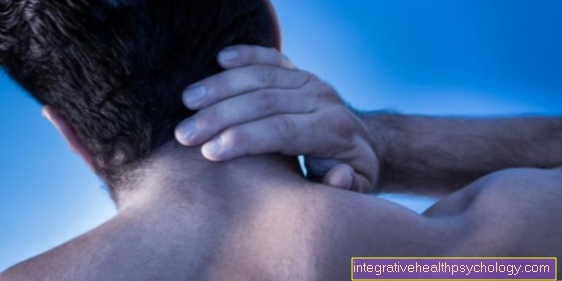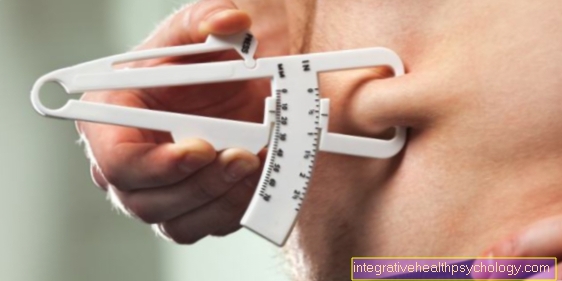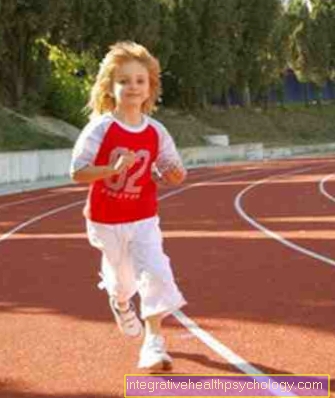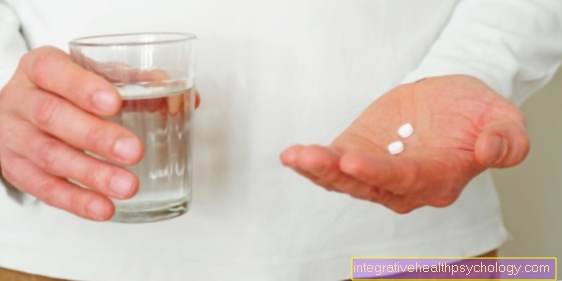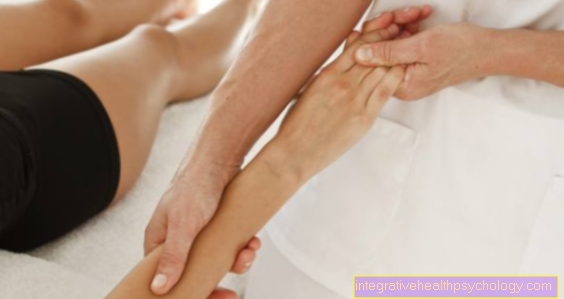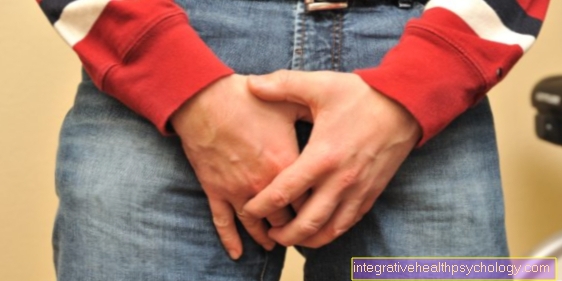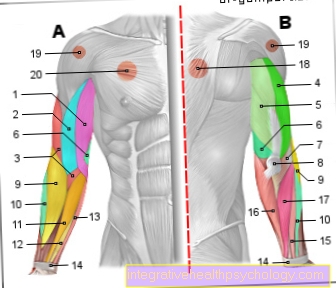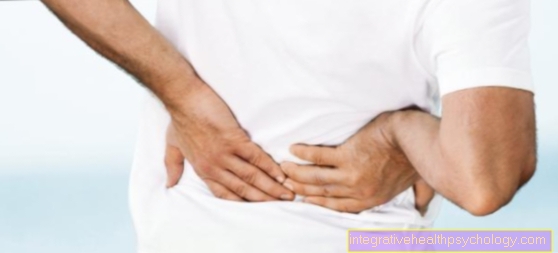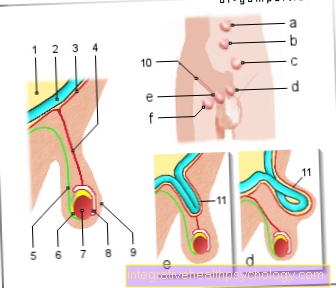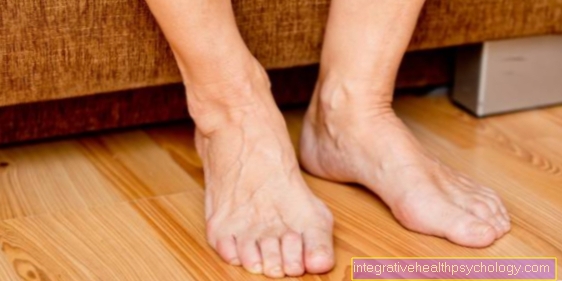Sports injuries
Healing wounds: There are simple remedies for sports injuries that heal quickly.
General
According to Prof. Dr. Böhmer (1992) around 4% of all athletes have an accident every year. Regardless of this, it is clear that the risk of injuring yourself during a competition is higher than that of injuring yourself during training.
A distinction is made between the general causes for the occurrence of an injury in terms of endogenous and exogenous injuries.
Endogenous injuries are those injuries that are related to the athlete himself. This includes, among other things, insufficient training, mental and physical fatigue, deficiencies in nutrition and electrolytes, or injuries that have not healed, etc.
Exogenous injuries, on the other hand, are injuries that can be traced back to external influences, unfavorable framework conditions or inadequate sports equipment.
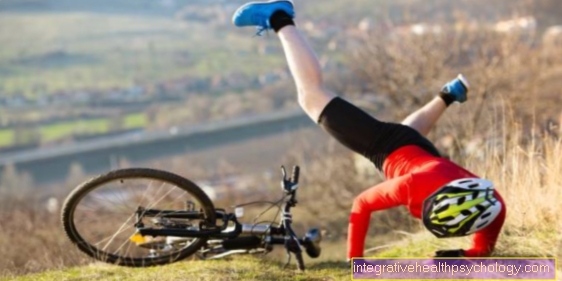
The most common sports injuries
Unfortunately, where people do sport, injuries often occur during sport. The most common types of injury are discussed below.
Overview of the most common sports injuries
- Tennis elbow
- Golfer's elbow
- Blow
- Cruciate ligament tear
- Meniscal tear
- Ligament stretch
- Outer ankle fracture
- Achilles tendon tear
- aching
- Injury in bodybuilding
Different types of injuries
Bruises
Bruises are one of the most common sports injuries worldwide. Depending on which sport is practiced, bruises can sometimes appear all over the body. Due to the popularity of football one finds often Bruises on the shins, ankles and thighs.
Due to the blunt force, the Muscles pressed against the bone and damage blood and lymph vessels. Blood and lymph flow out and collect in the surrounding tissue. At the affected area a swelling and a bruise, of the in most cases Indeed not treated must become. This phenomenon is popular too Horse kiss called.
You can find more on the subject at: bruise
Strains
Strains are uncomfortable and usually put the athlete out of action immediately. The muscle group most commonly affected by strains is the thigh. But strains can also occur in the abdominal muscles, calves and arms during exercise.
In the case of a strain, the muscle or individual Muscle cells stretched beyond healthy levels and overstretched. This creates small ones Micro cracks in the fibers of the muscles. Strains appear especially when athletes are not sufficiently warmed up have or in one bad training condition and put too much strain on their muscles. When the muscles are overloaded, these micro-tears can also appear and the athlete has sustained a strain.
Spasmodic pain occur immediately in the event of a strain and always come back when the affected muscle fibers are activated again. As first aid you can contact the PECH rule hold - pause, ice cooling, compression and elevation.
Read more about the topic here: Muscle strain
Torn hamstring
This injury, which mostly affects the calf and thigh muscles, is caused by a Overextension of muscle fibers until individual fibers finally tear. Situations that trigger a hamstring are very common fast turns or accelerations. The athlete immediately feels a short stabbing pain that recurs each time the affected muscle fibers are activated. A very typical sports injury is, for example Torn muscle fiber of the adductors with footballers.
In addition to rest and painkillers, that can also be Taping of torn muscle fibers contribute to the relief of the affected muscle. However, complete healing usually takes about 4-6 weeks.
Torn ligament
Torn ligaments affect the ligaments and not the muscles. With this sports injury tears at least one ligament in a joint. Ligament injuries are actually always due to a Crack and Click to listen. this is the acoustic part of the torn ligament. Occurring Bleeding provide a swelling in the affected area. The affected joint hurts and feels unstable.
The most common ligament injuries in sports affect the knees and ankles. In theory, ligament injuries can occur on any part of the body. A bad ligament injury is a Cruciate ligament tear, as with this injury there is a high probability of having to end his sporting career. One distinguishes the anterior cruciate ligament tear and the posterior cruciate ligament tear.
Some ligament injuries can be treated conservatively without surgery, other ligament injuries require surgery. In these cases it can take up to six months for the injury to heal completely, and up to twelve months for a cruciate ligament tear.
more on the subject can be found at: Torn ligament
sprain
Sprains affect the joints and are caused by violent overstretching, e.g. from sudden twisting. Depending on the extent of the overstretching, ligaments or the joint capsule can be affected. Typical accompanying symptoms are pain, swelling, restricted mobility and in some cases a bruise.
You can find more on the subject under
- sprain
- Sprain of a toe
Capsule tear
The capsule is a shell that encloses the joint and contains synovial fluid so that movement in the joint can run smoothly. If a joint kinks and ligaments are injured, the joint capsule is usually also affected. In bad cases tears the joint capsule and Fluid leaks into the surrounding tissuewhat in a swelling results.
Capsular injuries most commonly affect the shoulder and knee. It is also advisable to use the PECH rules for treatment.
Read more about the topic here: Capsule tear
Tendinitis
Tendons are used to attach muscles to the bone. Overuse can lead to irritation of these tendons, which in the absence of early rest and too short regeneration phases in one Tendinitis can flow. For example, it can be used as part of a marathon training Tendonitis of the thigh come. There are stabbing and burning pains on the outside of the thigh.
In the case of tendinitis, adequate rest should urgently take place. Cold compresses and anti-inflammatory medication can provide further relief.
You can read more information on this topic here: Tendinitis
Abrasions and lacerations
Abrasions and small lacerations result from it blunt force on one point.
Abrasions usually occur on the legs and arms and are characterized by one burning pain out.
Lacerations can affect the knees, elbows and especially the head. They are very painful and go with one bleeding wound hand in hand.
Broken bone
Broken bones are mostly caused by force acting on the bones. Statistically speaking, the Forearm fracture most frequently which is classically created by catching a fall with your hands.
In addition to broken bones caused by falls and movements, there is also the group of Fatigue fractures. This sports injury occurs mostly on the shin and metatarsals on and arises through overload, especially for long-distance runners and soccer players.
concussion
The concussion is a sports injury that can occur in any sport and, depending on the severity, also life-threatening dimensions in the form of a Traumatic brain injury can accept.
Falls and collisions cause the Impact of the head on a hard and firm surface the brain shaken in the skull. Triggered by this, nerve cells can even be irreversibly destroyed. Symptoms the concussion are one sallow skin color, vomiting, nausea and imbalance.
The most dangerous sports
After the most common sports injuries have been presented, a list is now made of the most dangerous sports with the highest risk of sports injuries.
- Soccer: Getting injured while playing football every year hundreds of thousands of people. Usually it's just "Minor" injurieslike a bruise or a strain. Bone fractures and concussions occur just as much as muscle tears and ligament injuries, albeit in smaller numbers. Since there is a Contact sport injuries are inevitable in football and playing football is one of the most dangerous sports.
More on this: Injuries in football - ski: Skiing attracts millions of athletes to the mountain regions of the world every year. The high number of skiers on the slopes increases the Risk of collision and thus also the risk of injury. Since enormous forces act on the athletes in collisions due to the high speeds, very serious or even fatal injuries can occur while skiing. Compared to football, there are significantly fewer injuries in skiing overall. However, the injuries when skiing with fractures, ligament injuries, concussions, life-threatening falls and unfortunately also fatalities are much worse.
- Hand, volleyball and basketball: The situation here is similar to that of football. Due to the almost non-existent physical contact in these sports, the frequency of injuries is lower here than in football. However, shoulder and arm injuries are more common in the three sports mentioned.
- skateboard: When using a skateboard purely as a means of transportation, comparatively few accidents with injuries occur. The more the intention of “skating” goes in the direction of freestyle and extreme sports, the more injuries occur and the worse the injuries are.
- Cycling: The situation is similar with cycling. The typical hobby cyclist who uses his bike to commute to work, for leisure activities and for exercise is relatively seldom injured. Racing cyclists, on the other hand, injure themselves significantly more often and more severely, as falls at high speeds can occur.
- horse riding: In dressage, but also in show jumping, the risk of injury is relatively high. Serious bone, head and ligament injuries can occur if thrown by the horse and falls. When riding accidents happen often Head injuries, as the rider usually hits the ground head first when he falls. Helmets give riders greater protection, but are not 100 percent protected against head injuries.
- Tennis, badminton and squash: These sports can be considered very well summarized, as they are very similar in their execution and similar movements take place. These sports are characterized by a lot of dynamism, rapid changes of direction and explosive accelerations. Due to the stress profile described, strains, muscle fiber tears and sprains occur relatively frequently in these sports. Since many people practice these sports, the number of injuries is relatively high, but the classification of the severity of the injury is low.
In addition to the popular sports, the fringe and extreme sports must be considered separately.
- Extreme winter athletes, those who plunge into the deep snow from almost vertical mountain peaks towards the valley run a much higher risk of injuring themselves than amateur athletes.
Other extreme sports such as
- Bungee jumping
- Paragliding
- Skydiving
- Go downhill
- Driving extreme motorcross
- Extreme wave surfing
are associated with a very high risk of injury or even dying while practicing the sport. If an accident happens in one of these sports, in the vast majority of cases you will wear one serious to life-threatening injury from that. These sports are extremely dangerous, but are only practiced by a few individual athletes and therefore cannot be included equally in this list.
First aid after sports injuries
PECH rule
In the event of an acute injury, it is important that a full sports medical exam is performed. The injury should be cooled with ice in the first 15 to 20 minutes after the injury, as it can later disrupt the physiological wound healing. In individual cases, cooling can and must be longer for reasons of swelling and pain.
Read more on the topic: Sports medical examination methods
With almost every sports injury, immediate use of the PECH scheme measures according to Prof. Böhmer (Orthopedic University Clinic Frankfurt) is essential. Quick action is required.
- P -> pause
- E -> ice cream
- C -> Compression
- H -> elevated position
You might also be interested in this topic: Cruciate ligament overstretched
P = pause
The following applies to any injuries in any sport: stop exercising immediately. The injured area should be immobilized immediately. A direct examination is usually difficult because the injured area is very sensitive due to swelling and pain. The extent of the injury usually only becomes apparent in the first few days after the injury.
E = ice
Direct use of ice can have a positive effect on the healing process. The application of cold causes the blood vessels to narrow, which reduces the amount of bleeding and swelling. Furthermore, the metabolism is slowed down by the cooling, which leads to a reduction in tissue damage. Last but not least, cold has a pain-relieving effect.
However, it should be noted that the ice should never come into direct contact with the skin, as this can cause damage. So it should always be a cloth or e.g. Gauze bandages are placed between the skin and the cold pack. If there are open wounds, direct and indirect cold application is prohibited.
The duration of the cooling depends on the extent of the damage and the subjective well-being. If the ice is well tolerated, it can also be cooled for hours. However, the cold effect only extends a few cm deep, so that no “depth effect” can be achieved. If too long and persistent cooling is used, this can negatively affect the healing process.
If there is no ice available, cold compresses can be used without any problems. So-called ice packs are also suitable. These are plastic bags that are filled with a thick gel and can be easily deposited in the freezer "in case of an emergency"
C = compression
To prevent excessive swelling of the injured area, a compression bandage should be applied after or with the ice. However, only moderate pressure should be applied to ensure good blood flow. As the swelling increases in the first few hours, the tension of the compression bandage should be checked regularly. If the foot has a bluish discoloration, the bandage must be removed immediately.
H = elevated position
By elevating the injured area, the backflow of blood and swelling fluid is physically facilitated. If the foot is injured, e.g. this should be completely raised within the first 48 hours. Regular elevation should be carried out until the foot has completely subsided.
A sports medical examination is necessary. At a Sports injury The emergency room, orthopedic surgeon or sports doctor should be your first point of contact.
Injury and Homeopathy
Various homeopathic medicines can help aid healing. Read more about this interesting topic at: Homeopathy and Injury.
Sports injury prevention
As you can already see from the causes, many sports injuries can be prevented through optimized behavior. Just warming up correctly or avoiding excessive strain can significantly reduce the risk of sports injuries.
An optimization of the training condition is of fundamental importance. This implies that the training plan as such is optimally tailored to the individual performance possibilities of the athlete. You should always prepare properly and adequately for training and, above all, for competition. This includes, above all, a proper warm-up training including stretching. It is also important to have proper sports equipment with suitable shoes and clothing. A balanced diet should also be ensured to prevent deficiency symptoms. Under certain circumstances, appropriate food supplements or supplements can be taken. One should pay attention to the signals of the body with regard to fatigue and / or illness conditions. In the event of fatigue and illness, the training load must be reduced! A sick body is not as efficient as a healthy body. This must be taken into account especially if an illness has not yet completely healed.
Dr. Nicolas Gumpert also interviewed Mein-Allergie-Portal.com on this topic.
You can read the entire interview under Sports Injury and Painkillers Intolerance.



